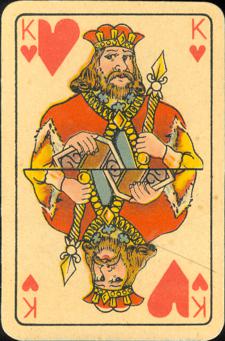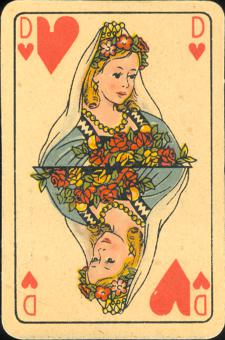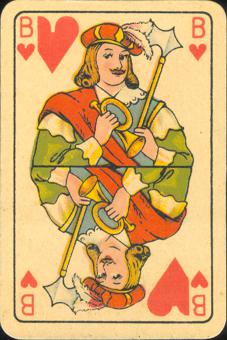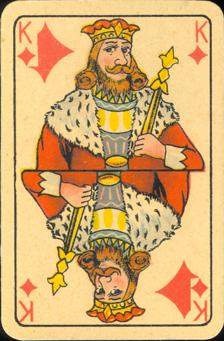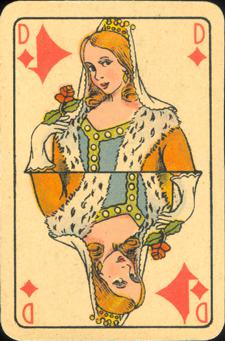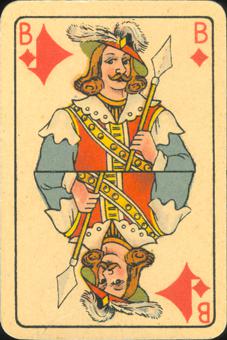April 2013
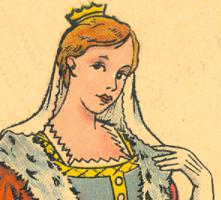 |
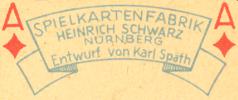
|
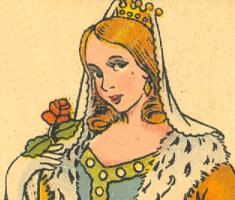 |
|
April was
a slow month for new decks. The main event here was the large collectors
bourse in Utrecht. We did some nice finds there, but only one for our
own collection. It's a deck by the Vereinigte Stralsunder
Spielkarten-fabriken from the 1920's. We can't show it here, because
it's now part of a sub-collection of old or antique decks, that have
never been opened and are still in their original wrapper and box. Too
much respect here for their age and condition! |
|
So once
again the internet had to provide decks to show. The offer on
Ebay wasn't quite exciting, but we did find a few new and
interesting decks. From a German seller we managed to win the deck that
would have completed our Cedok-Interhotel xpo, but we can't show that there
either, because it never arrived. So the monthly shortlist was a bit short this
time. There was a nice and unknown "sports" variation of the
Hearts Classic deck from c2008..... and this one. There's about a 60 years
difference in age and this month we've decided that the oldest should go
first. |
The information
about the manufacturer and the designer was not hard to find, as they are given
in the Ace of Diamonds. However, when we did the research -of course in Franz
Braun Bande 9- to date this publication, we found some other interesting facts
too.....
At the end of the second World War the German industrial capacity had already
been diminished, but the country had also been divided into 4 occupied zones.
This caused distribution problems for various products. Among them were playing
cards. In order to deliver those to the people in the Nürnberg area, an export
trader named Heinrich Schwarz, who had experience in the toys business, founded
the "Spielkarten-Vertrieb Heinrich Schwarz" in November 1947. A few
months later the name of the company was changed to "Nürnberger
Spielkarten-Fabrik Heinrich Schwarz". Although that name suggests that the
company prints playing cards, the actual printing was done by the "Lithographischen
Kunstanstalt und Steindruckerei Heinrich Gerlich" in Nürnberg. This
printer produced 3 decks for Heinrich Schwarz. They can be recognized by the
boxes, which carry the printer's copyright logo too. Unfortunately our deck came
without a box.
|
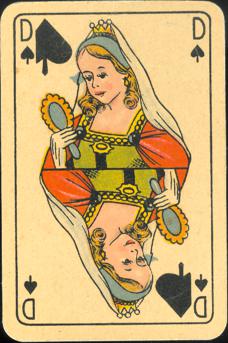
|
|
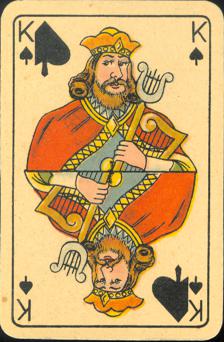 |
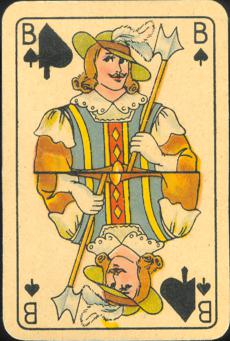
|
|
|
|
|
Two of these
3 decks were designed by Karl Späth, a German painter. The first one was
a comical variation of the single imaged Bavarian pattern, with German
suit symbols. His second deck was published as a Skat deck for players,
who were used to the French suit symbols. It was published in 1948, as
last of the three. Later decks by Heinrich Schwarz were printed by
Druckerei Fritz Fisscher. |
|
The artist has designed a remarkable symbol for the Club suit. It's
repeated on the courts and numeral cards. |
|
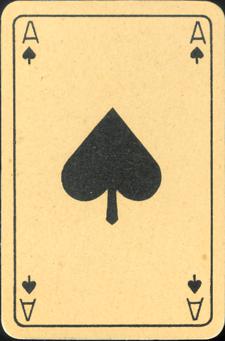
|
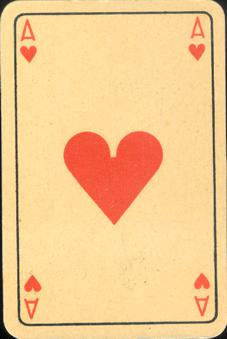
|
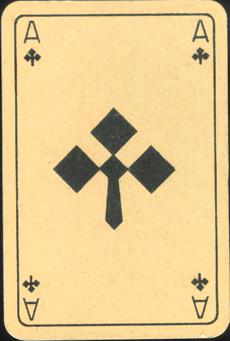
|
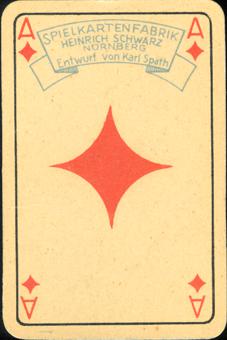
|
|
Unfortunately we couldn't find any information about
Karl Späth on the internet.
|
|
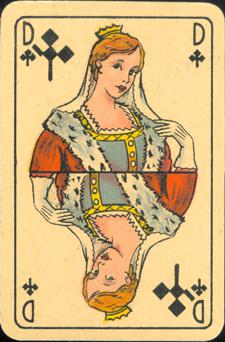
|
|
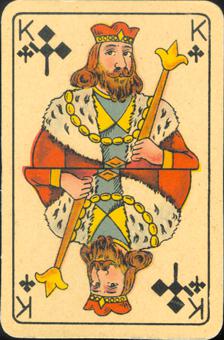 |
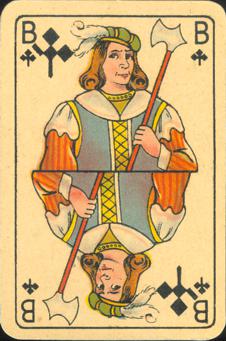
|
|
|
|
|
Although the
designs have a classic look, the deck can be classified as non-standard.
Karl Späth must have looked at several standard patterns for inspiration,
but his designs don't match any. The faces of the courts reveal the
artist's touch, which gives them expression. |
The deck consists
of 32 cards.
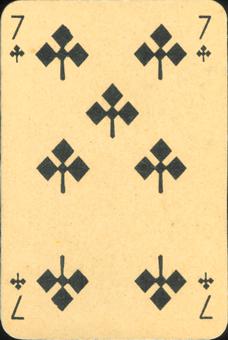
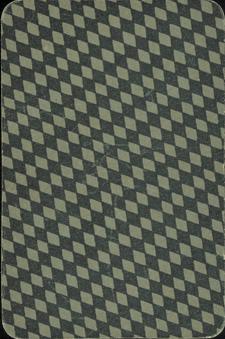
By the end of 1960 the Nürnberger Spielkarten-Fabrik
Heinrich Schwarz was taken over by Gisela Herfurth.
BACK TO PRESENT MONTH






